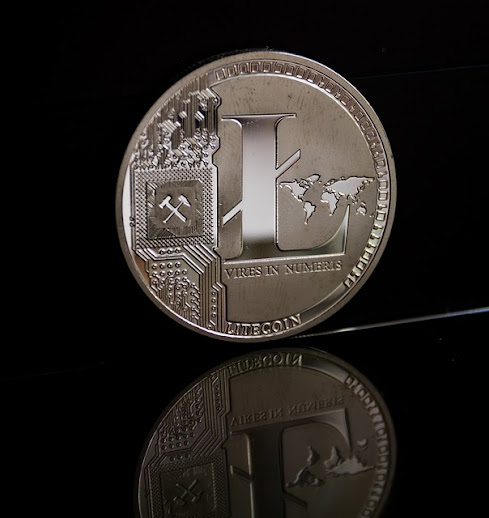Litecoin
Litecoin (LTC) is a peer-to-peer cryptocurrency and open-source software project released under the MIT/X11 license. Launched on October 7, 2011, by Charlie Lee, a former Google employee and engineer at Coinbase, Litecoin was created as a "lite" version of Bitcoin, aiming to provide faster transaction confirmations and a more efficient mining algorithm.
History and Development
Origins and Early Development
Litecoin was developed based on the Bitcoin protocol, with several key differences aimed at improving upon Bitcoin's limitations. One of the primary goals was to decrease the block generation time, which Litecoin set at 2.5 minutes compared to Bitcoin's 10 minutes, thereby allowing faster transaction confirmations.
Segregated Witness (SegWit) Activation
In May 2017, Litecoin activated Segregated Witness, or SegWit, which is a protocol upgrade that addresses scalability issues by separating transaction signatures (witnesses) from transaction data. This upgrade not only increased the block capacity but also paved the way for technologies like the Lightning Network, enhancing Litecoin's utility and speed.
Key Features and Technology
Scrypt Proof-of-Work Algorithm
Litecoin uses the Scrypt hashing algorithm for its proof-of-work consensus mechanism. This algorithm was chosen to enable mining with consumer-grade hardware, making it more accessible for individuals to participate in the network without needing specialized and expensive equipment.
Faster Block Generation
With a target block time of 2.5 minutes, Litecoin is capable of confirming transactions more quickly compared to Bitcoin. This feature enhances its suitability for everyday transactions and micro-payments.
Coin Supply and Distribution
Litecoin's total coin supply is capped at 84 million coins, four times the maximum supply of Bitcoin. This higher supply cap allows for more widespread distribution and theoretically reduces the risk of price manipulation by large holders.
Market Position and Adoption
Market Performance
Litecoin has consistently ranked among the top cryptocurrencies by market capitalization. Its longevity and robust development have contributed to its reputation as a reliable and secure cryptocurrency.
Adoption and Use Cases
Litecoin is widely accepted by merchants and online retailers as a form of payment. Its faster transaction times and lower fees compared to Bitcoin make it attractive for everyday transactions and remittances.
Criticisms and Challenges
Scalability Concerns
Like many cryptocurrencies, Litecoin faces challenges related to scalability as its user base grows. While SegWit and the Lightning Network have mitigated some of these concerns, ongoing development is necessary to ensure long-term scalability.
Market Competition
As the cryptocurrency space evolves, Litecoin competes with numerous alternative cryptocurrencies, each offering unique features and improvements over Bitcoin and Litecoin itself.
Unique Aspects of Litecoin
Atomic Swaps and Interoperability
Litecoin has been at the forefront of implementing atomic swaps, which allow for trustless and decentralized exchanges of cryptocurrencies across different blockchains. This technology enhances Litecoin's utility by enabling seamless transactions between different cryptocurrencies without the need for intermediaries.
Development and Community Support
Litecoin benefits from a dedicated community and active development team led by its creator, Charlie Lee. Continuous updates and improvements ensure the network's security, scalability, and usability.
Privacy Features
While initially lacking strong privacy features, Litecoin has explored integrating technologies like MimbleWimble and Confidential Transactions to enhance user privacy. These developments aim to address concerns over transaction traceability while maintaining the network's integrity.
Litecoin's Role in the Cryptocurrency Ecosystem
Digital Silver to Bitcoin's Gold
Litecoin is often referred to as "digital silver" to Bitcoin's "digital gold," highlighting its complementary role in the cryptocurrency market. Its faster transaction speeds and lower fees make it suitable for smaller transactions and day-to-day use cases, while Bitcoin remains a store of value and medium for large transactions.
Institutional Interest and Investments
Litecoin has garnered attention from institutional investors and financial institutions, contributing to its liquidity and market stability. Its established history and robust infrastructure make it a trusted asset within the cryptocurrency investment landscape.
Future Prospects and Challenges
Regulatory Environment
As with all cryptocurrencies, Litecoin faces regulatory scrutiny and evolving legal frameworks worldwide. Adapting to regulatory changes while maintaining decentralization and user privacy remains a significant challenge for its long-term viability.
Technological Innovations
Future advancements such as Layer 2 solutions, smart contracts, and enhanced privacy features could further differentiate Litecoin from its competitors and expand its use cases beyond peer-to-peer transactions.
Community Engagement and Adoption
Continued community engagement and partnerships will be crucial for Litecoin's growth and adoption. Building on its existing strengths and addressing user feedback will help maintain its relevance in a competitive cryptocurrency landscape.
Conclusion
Litecoin continues to evolve as a prominent cryptocurrency with a clear niche in the market. Its focus on speed, efficiency, and accessibility makes it a preferred choice for users and businesses seeking fast and cost-effective transactions. As the cryptocurrency ecosystem continues to mature, Litecoin's ability to innovate and adapt will determine its position in the digital economy of the future.





.jpg)
.jpg)
.jpg)
.jpg)
0 Comments